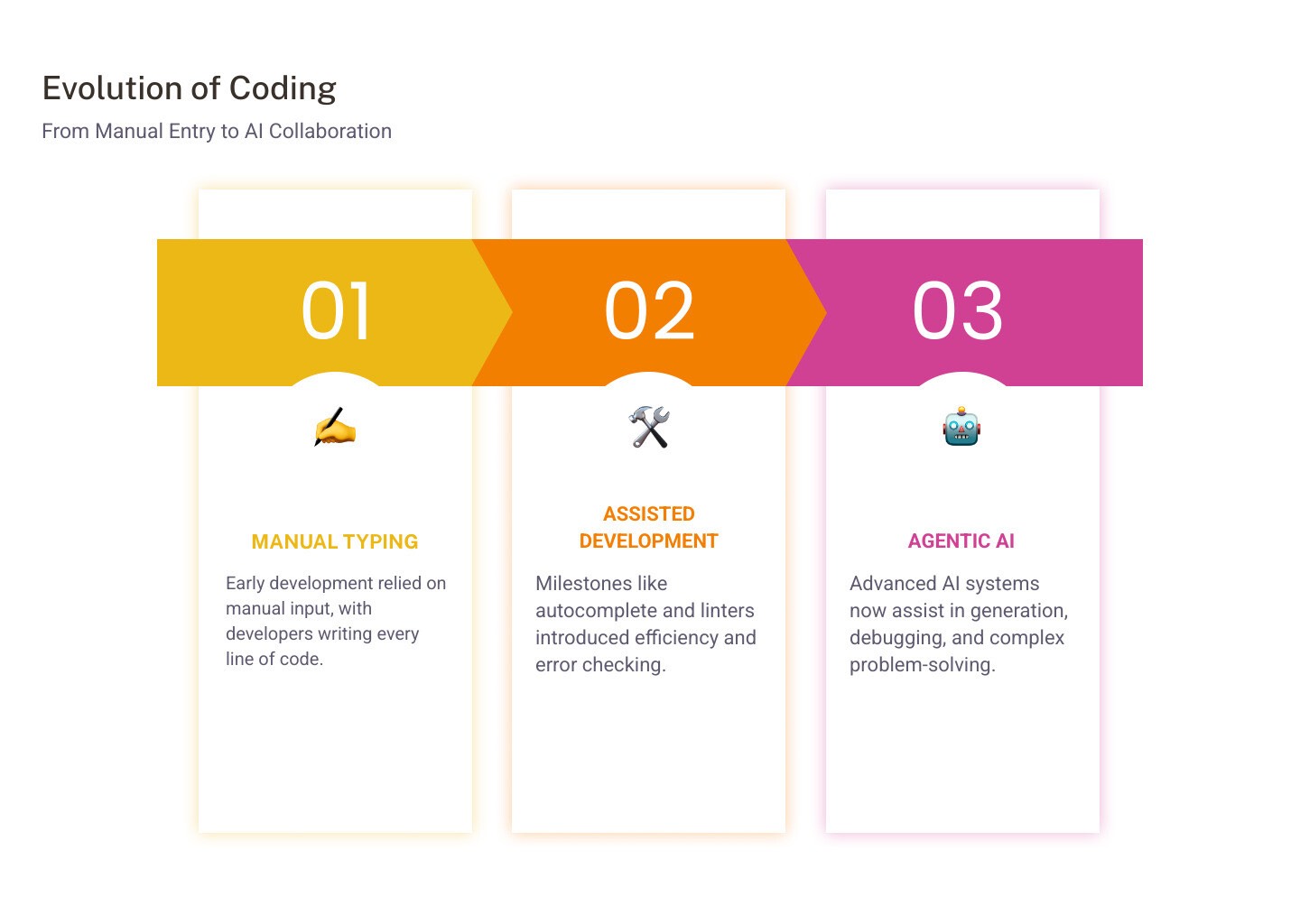Unlock Your Inner Developer: Prompting Claude for Superior Code
The Power of Effective Claude Coding Prompts.

Claude coding prompts are the instructions you give Claude AI to generate, understand, or refine code. As a developer using AI, you know it's a game-changer, but getting the best results can be a struggle. You might waste time writing the right prompts or fixing bad outputs.
The key to amazing results from Claude is how you talk to it. As one expert noted, "proper prompt engineering is the answer to nearly all of their problems."
So, what makes an effective Claude coding prompt? Here's a quick look:
- Be Explicit and Specific: Tell Claude exactly what you need.
- Provide Rich Context: Give Claude all relevant code, file structures, and project details.
- Assign a Persona: Ask Claude to act as an "expert programmer" to shape its approach.
- Control Output Format: Use tools like XML tags or JSON mode to get the exact response format you want.
- Leverage Thinking: Encourage Claude to "think step-by-step" to improve its reasoning.
- Refine Iteratively: Treat it like a conversation, guiding Claude with specific feedback.
This guide will show you how to craft prompts that turn Claude into an expert coding partner, helping you generate high-quality code, debug issues, refactor projects, and write documentation and tests.

Core Principles of Prompt Engineering for Claude
Effective prompt engineering is a craft. It's not just about throwing words at an AI; it's about thoughtful construction, rich context, and clear communication. Let's explore the core principles that will make your Claude coding prompts sing. For a general introduction, see Anthropic's overview of prompt engineering techniques.
Be Specific, Explicit, and Context-Rich
When asking a human colleague for help, you'd provide context. The same applies to Claude. Vague requests lead to poor LLM output, so be explicit with your instructions. This means specifying:
- Programming Language and Frameworks: Is it Python with Django, or React with TypeScript?
- Libraries and Dependencies: Mention any specific libraries or versions.
- Desired Coding Style: Do you prefer functional programming or a specific design pattern?
- Project Constraints: Are there performance requirements or security considerations?
- Code Readability and Maintainability: Emphasize that code should be well-structured and easy to understand.
One prompt engineer noted their prompts often have "20+ lines of detailed instructions" for hyper-specific output. This level of detail gives Claude the context it needs to perform well.

Adopt a Persona: The "Expert Collaborator" Technique
A great trick for elevating Claude's output is to assign it a persona. Instead of just asking for code, ask Claude to be someone, which guides its approach and response quality.
For coding tasks, we've found immense success with personas like:
- "You are a seasoned programmer with over 20 years of commercial experience."
- "Act as a meticulous software architect."
- "You are an expert in secure coding practices."
This technique "lifts the expected quality and depth of the AI's output for coding tasks." When Claude embodies an expert, it focuses on code quality, maintainability, and best practices, acting like an experienced mentor.
Structure Your Prompts with XML Tags
For Claude 3 models, XML tags are a secret weapon for clarity. They help Claude parse different sections of your prompt, like instructions, context, and examples. Common tags include:
<instructions>: For the main task or commands.<context>: To provide relevant background information or existing code.<example>: For few-shot examples.<thought>: To encourage Claude to show its reasoning process.<code_block>: To explicitly mark code snippets.
Using XML tags improves clarity and output. It's a simple way to ensure Claude understands your request.
Provide High-Quality Examples (Few-Shot Prompting)
Sometimes, showing is better than telling. Few-shot prompting involves providing one or more input-output examples to demonstrate the desired behavior. This is particularly effective for:
- Specific Code Formatting: Show Claude your preferred indentation or comment style.
- Desired Output Style: If you need a specific JSON structure or tone.
- Complex Changes: Illustrate how an input should be transformed.
High-quality examples guide Claude more precisely than instructions alone, leading to more accurate results. Your examples and details are crucial for guiding the AI.
Advanced Claude Coding Prompts and Techniques
Once you've mastered the basics, you can explore advanced techniques to make Claude an expert coding partner. This includes precise output control, leveraging its "thinking" process, and orchestrating complex agentic workflows to tackle tricky coding challenges.

Precisely Controlling Code Output: JSON Mode and Formatting
Claude can produce highly structured, predictable output, which is crucial for machine-readable responses like API payloads or configuration files. For a JSON response, instruct Claude to provide one, pre-filling the response with { and asking for no extra preamble. This ensures a clean, parsable JSON string.
For example, you could ask:
Please provide the following data in JSON format, without any preamble or explanation.
{
"function_name": "calculate_factorial",
"description": "Calculates the factorial of a given integer.",
"parameters": [
{"name": "n", "type": "integer", "description": "The input integer"}
],
"returns": {"type": "integer", "description": "The factorial of n"}
}
This approach helps you precisely control Claude's output format. Claude can also generate XML output. By being clear about your desired output, you turn Claude into a precise data-structuring machine.
Leveraging Claude's "Thinking" Process for Complex Problems
Claude can "think" internally, breaking down complex problems step-by-step like a human developer. This is valuable for architectural decisions, algorithm design, or debugging. Encourage this "chain-of-thought" reasoning by explicitly instructing Claude to "Think step-by-step".
For deeper insights, use <thinking> tags. Ask Claude to place its internal monologue inside these tags. This lets you see how it arrived at a solution, like a senior developer explaining their approach.
For instance, you might prompt:
<instructions>
Design a scalable microservice architecture for a new e-commerce product catalog.
Think step-by-step through the components, data flows, and potential bottlenecks.
</instructions>
Claude will show its thought process in <thinking> tags, followed by the design. This allows you to check its reasoning and course-correct if needed, leveraging its thinking for complex Claude coding prompts.
Agentic Workflows: Frontend Generation and File Management
Claude's capabilities extend beyond code snippets. With tools like Claude Code, it can interact with your local environment, manage files, and generate visual components from images. These are "agentic workflows," where Claude acts as a software agent in your project.
Claude can take screenshots or UI mockups as input and generate the HTML and CSS to match a design. Claude Code can also read and write files directly, understanding your project's full context. You can instruct it to perform multi-file tasks like refactoring and updating documentation.
The CLAUDE.md file is key to these workflows. This file in your project root gives Claude persistent, project-specific context, commands, and guidelines. Claude can also use external tools, like a Puppeteer MCP server for browser automation, to interact with web pages and test UI elements, saving you time on repetitive tasks.
Optimizing for Complex Tasks with Parallel Tool Calling
For workflows with many steps or external services, Claude 4 models excel with parallel tool calling. This allows Claude to make multiple API calls or perform operations simultaneously, speeding up complex tasks. Careful prompting can boost the success rate of parallel tool use to nearly 100%. This is important for efficiency in tasks like:
- Data Processing Pipelines: Getting information from several different sources at once.
- Complex API Interactions: Making a bunch of API calls to collect all the data needed.
- Workflow Orchestration: Kicking off multiple sub-tasks or agents at the same time.
Designing Claude coding prompts for parallel operations open ups new levels of productivity, turning slow, sequential processes into concurrent ones for a smoother workflow.
Practical Prompts for the Entire Development Lifecycle
Now let's apply these principles and techniques to everyday development tasks. Claude is a versatile assistant that can support you throughout the entire software development lifecycle.

Crafting Claude coding prompts for Generation & Refactoring
Claude coding prompts are excellent for kickstarting features or cleaning up existing code.
For code generation, be specific. For example, when asking for a Flask API endpoint, detail the requirements: "As a seasoned Python developer, write a Flask API endpoint for user registration. Include input validation, password hashing using werkzeug.security, and store user data in a SQLite database. Provide the full code for app.py." The more detail you provide, the better the initial output.
Claude also excels at refactoring and optimization. You can ask it to "Refactor the attached Java code snippet to improve readability and maintainability... and ensure it follows modern Java best practices." For performance, you can ask it to "Analyze the following SQL query for performance bottlenecks. Suggest optimizations..." A simple prompt like "Show me the cleanest solution" can dramatically simplify code.
Effective Claude coding prompts for Debugging & Code Review
For debugging and error analysis, provide context, not just an error message. For example: "I'm encountering the following TypeError in my JavaScript application: [Paste error message and stack trace]. Here is the relevant code... What is the root cause, and how can I fix it?"
Claude can also be an impartial code reviewer. Ask it to "Perform a comprehensive code review on the provided Python service implementation. Focus on potential bugs, security vulnerabilities, performance issues, and adherence to PEP 8 style guidelines." You can also provide a pull request and ask it to identify potential side effects or missing test cases. This is an invaluable way to catch issues early.
Prompts for High-Quality Documentation & Testing
Claude can make writing code documentation painless. Provide code and specify your needs, such as: "Write comprehensive API documentation for the following Node.js Express route. Include details on request parameters, response structure, error codes, and an example usage." It can also generate inline comments for classes and methods.
Robust software testing is crucial, and Claude can help build your test suite. Ask it to "Write comprehensive unit tests for the attached Python function using pytest. Cover positive cases, edge cases... and error handling." It can also help design integration test plans. For Test-Driven Development (TDD), you can guide Claude to write failing tests first, then the code to make them pass. This is smart Claude coding prompts in action!
Avoiding Common Pitfalls and Mistakes
Even with powerful techniques, it's easy to stumble. Using AI for coding effectively means knowing what not to do. Let's review common pitfalls and how to avoid them.

Moving Beyond "Does it Pass the Test?"
A common mistake is focusing only on passing tests. While crucial, tests aren't the sole measure of success. AI-generated code can pass tests but still be brittle, inefficient, or hard to maintain.
- Aim for Robustness: Ask for a "robust solution that handles various edge cases and scales efficiently," not just one that passes a test.
- Prioritize Maintainability: Instruct Claude to follow principles like modularity and readability. Ask for explanations to ensure you understand the code.
- Avoid Shortcuts: Explicitly tell Claude to avoid hard-coding values, suggesting it use configuration or parameters instead.
Claude's target should be a well-designed, maintainable solution, not just a passing test.
The "Skill Issue": Why Vague Prompts Fail
A vague, one-line prompt like "Write me some Python code" often yields underwhelming results. This is usually due to inadequate prompting, not a limitation of Claude.
- Claude Isn't a Mind-Reader: You must provide project context and preferences.
- Context is Key: Without it, Claude provides generic solutions that may not fit your needs.
- Iterate and Refine: If the first output isn't perfect, refine your prompt with more detail. Treat it as a dialogue with a knowledgeable colleague who needs clear instructions.
The effectiveness of your Claude coding prompts depends on the precision of your input.
Managing Context and Preventing Hallucinations
Claude has a large context window (up to 100k tokens) and free file uploading, but managing this context is crucial to prevent "hallucinations"—factually incorrect or nonsensical output.
- Keep Context Focused: Use the
/clearcommand to reset context when switching tasks to avoid confusion from past conversations. - Provide Source Code: Upload or paste code directly instead of describing it to ground Claude's responses.
- Verify APIs and Algorithms: Always double-check suggested APIs or algorithms, as LLMs can invent them.
- Fact-Check: Verify Claude's output, especially for critical information. Ground prompts with documentation for external systems.
Effective context management and healthy skepticism are your best defense against hallucinations. Continuously refine your prompting skills.
Frequently Asked Questions about Claude Coding Prompts
Here are answers to some of the most common questions we receive about using Claude for coding.
How is prompting Claude for code different from other models?
While general prompt engineering principles apply, Claude has unique strengths that impact how you should craft your Claude coding prompts, making it a more powerful partner.
- Larger Context Window: Claude boasts a significantly larger context window (up to 100k tokens). This is a game-changer, allowing you to provide entire files or project documentation for more relevant and accurate suggestions.
- XML Tag Preference: Claude 3 models prefer XML tags for prompt structuring. These tags help Claude parse your instructions, context, and examples, leading to a more organized and effective conversation.
- Complex Instruction Following: Claude has a nuanced understanding of long, complex instructions. Its training (including Constitutional AI) helps it follow intricate, multi-step directions, making it ideal for detailed technical specifications.
- Free File Uploading: Claude offers free file uploading, a major time-saver that avoids copy-pasting large code blocks.
- Safety and Structure: Claude's internal system prompt and tool usage policy emphasize safety and a structured approach, making it less prone to generating problematic code. These differences allow you to push Claude further with detailed, structured instructions.
How can I migrate my existing coding prompts to Claude?
Migrating existing prompts from other LLMs to Claude is straightforward and often improves performance. Here's our recommended strategy:
- Wrap in XML Tags: First, wrap your instructions in XML tags like
<instructions>or<context>. This is a crucial step for Claude 3 models that significantly improves clarity. - Provide More Context: Next, leverage Claude's larger context by providing more files. Unlike models with smaller context windows, you can upload entire modules,
README.mdfiles, or configurations. More context yields better output. - Be More Explicit: Then, be more explicit with constraints and style. Detail your coding standards, design patterns, and performance or security constraints.
- Combine Steps: Also, combine multiple steps into a single prompt. Claude's ability to follow complex requests can streamline your workflow.
- Assign a Persona: Finally, assign a persona. Adding a phrase like "Act as a senior software engineer..." can guide Claude's tone and depth of analysis.
What is CLAUDE.md and how do I use it?
CLAUDE.md is a powerful feature for agentic workflows with Claude Code (Anthropic's command-line tool). It acts as a persistent, project-specific memory or cheat sheet for Claude.
- What it is:
CLAUDE.mdis a Markdown file in your project's root directory. Claude Code automatically loads its contents into the context at the start of a conversation. Keeping it concise (around 20 lines) is recommended. - What to put in it: Use
CLAUDE.mdto store information you don't want to repeat, such as project-specific instructions (e.g., tech stack), common commands (e.g.,npm test), style guidelines, environment setup details, and codebase structure. - How to use it: Create
CLAUDE.mdin your project root and fill it with relevant details. Claude Code will automatically read it. Update it as your project evolves. This file eliminates repetitive context in your prompts, making your Claude coding prompts even more effective.
Conclusion
We've covered how to master Claude coding prompts, changing simple requests into sophisticated, collaborative conversations. You've learned about specificity, rich context, personas, and XML tags. We also covered advanced techniques like leveraging Claude's thinking process and agentic workflows. Together, these transform Claude into an incredible coding partner.
Claude is most effective when treated like a brilliant colleague who needs the right information. Like any collaboration, it's an iterative process: better prompts yield better solutions.
That's where Potions comes in. We believe prompt engineering is a collaborative craft. Our platform provides a robust version control system for prompts, where every creation is saved, versioned, and given a stable link. This allows you to track changes, experiment, and build on others' work. At Potions, you can search proven prompts, remix them for your needs, and contribute to our growing library of AI expertise. We offer a community-powered approach to evolving the best prompts.
Ready to take your Claude coding prompts to the next level? Experiment, refine, and open up the immense potential of AI as your development ally.
Ready to dive deeper into collaborative prompt engineering? Explore powerful AI prompts on our platform and join a community dedicated to open uping the full power of AI.